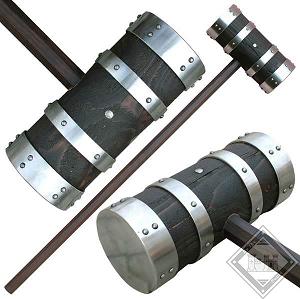Just wanted to add: the two handed falx was the weapon of the RICHEST, not of the poorest. And while romans didn't adopt it, we have numerous coins of romans showing off captured falxes to the emperor. And it was effective enough to force roman legions to adopt the manica, and possibly upper leg protection, as it could puncture the scutum. Or get behind it and cut the
shield hand. Even after this improvement, capturing Dacia was a HARD WAR. Of course, the falx-wielding fighters only came to play after the formations have been broken, as it's ineffective against a shield wall.
BTW, explain me something. What is exotic? To me, a katar is exotic, just as the pesh-kabz, or the black-sea yataghan, not to mention the keris, as they are NOT used in Europe. But they were used for centuries... and not for decoration, but for killing. You know, if something doesn't work - you stop using it. Especially when you have such a huge variety of weapons like in India. Oh, mentioning India. Some of these "exotic" weapons were used by Sikh people. Who could defend themselfes against moghul invasion quite well, and in a later revolt, they gave a hard time to even the English.
